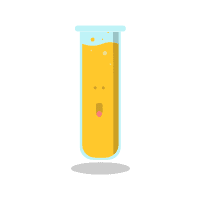
NCSCOS Grade 8 Life Science- 8.L.3 Diagnostic Ecosystems
Quiz by GADOE
Grade 8
Science
North Carolina Standard Course of Study
Feel free to use or edit a copy
includes Teacher and Student dashboards
Measures 3 skills from
Measures 3 skills from
With a free account, teachers can
- edit the questions
- save a copy for later
- start a class game
- automatically assign follow-up activities based on students’ scores
- assign as homework
- share a link with colleagues
- print as a bubble sheet
10 questions
Show answers
- Q1Scientists discover that chemicals dumped in a river have caused trout, a type of fish, to die. What other living things will be MOST affected by the trout dying?bears that eat the troutplants that live at the edge of the riverfishermen that catch the troutanimals that drink the water30s8.L.3.1
- Q2The hydrilla plant was introduced to freshwater habitats, like ponds and streams, in Georgia. Scientists found out that it crowds out the other water plants. It also uses up oxygen needed by other organisms living in the water. What MOST LIKELY happens when the hydrilla plants increase in a body of water?Young fish get more food to eat.Small fish get more hiding space from bigger fish.Other water organisms begin to die.Fish lay more eggs in the hydrilla.30s8.L.3.1
- Q3Many chemicals are used to kill insects and protect plants. How could the removal of insects upset the balance of the ecosystem?Animals that eat the insects would die as well.The animals in the ecosystem would eat all the plants.Insects from other regions would replace the killed insects.The plants would rapidly decrease in number.30s8.L.3.1
- Q4In the hills of North Carolina, several different species of wrens live in one large pine tree. This is possible because the wrenshave different natural enemies.must have the resource competition from the other wren species.breed at different times.eat different foods found in and on the tree.30s8.L.3.2
- Q5If the bald eagle was removed from this food web, what effect would this have on the population of the other species?The tundra swans would decrease in population size because they are eaten by the bald eagle and the vegetation would increase in population size.The wading birds would increase in population size because they are eaten by the ospreys and the small planktivorous fish would increase in population size.The bivalves would increase in population size because they are eaten by sea ducks and the phytoplankton would decrease in population size.The benthic invertebrates would decrease in population size because they are eaten by the sea ducks and the phytoplankton would increase in population size30s8.L.3.2
- Q6Which BEST determines the number of wolves that can live in an area?The amount of food available in the areathe number of trees in the areathe number of birds that live in the areathe amount of snow in the area each year30s
- Q7Kudzu vines grow by climbing and wrapping around trees. Trees covered by kudzu can die because they are starved of sunlight. What type of relationship exists between the trees and the kudzu growing on them?competitionpredator-preyparasitismmutualism30s8.L.3.2
- Q8Consider this food web: Where is the largest amount of energy found in this food web?hawkgrassgrasshoppermouse30s8.L.3.3
- Q9Which BEST explains the importance of nitrogen in the cycling of energy and matter?Nitrogen increases protein production in plants.Nitrogen decreases the effectiveness of photosynthesis.Nitrogen increases the effectiveness of photosynthesis.Nitrogen decreases protein production in plants.30s8.L.3.3
- Q10The two main processes by which plant cells absorb, release, and use energy arephotosynthesis and respiration.fermentation and respiration.aerobic and anaerobic respiration.digestion and photosynthesis.30s8.L.3.3